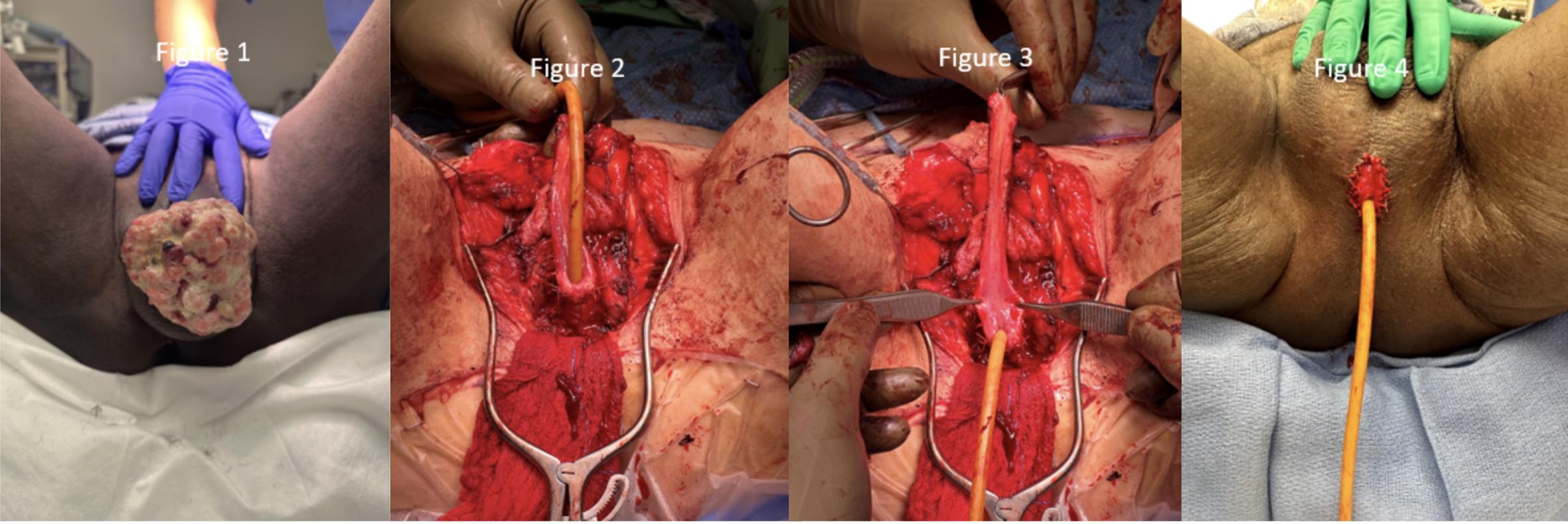Introduction:
Perineal urethrostomy is an effective means of urinary diversion in cases of penectomy, however stenosis of the neo-meatus is a common complication affecting 5-22% of patients. Few have proposed alternative surgical techniques to minimize this complication. The aim of this study is to describe a novel surgical technique for perineal urethrostomy creation and to report on procedure safety, efficacy, and patient satisfaction. We employ methods derived from urethral reconstruction performed as part of penile inversion neovagionplasty to develop a perineal urethrostomy for use in cases of penectomy for penile cancer and pelvic trauma or injury.
Methods:
This is a single institution case report study of two patients who underwent total penectomy for penile cancer (Fig 1) and penile calciphylaxis with creation of a perineal urethrostomy employing a novel surgical technique. A 3 cm elliptical neo-meatus site was created in the perineum and the urethra was brought out through the perineal incision. The urethra was spatulated (5 cm) ventrally forming a urethral strip (Fig 2). Redundant spongiosal muscle was removed and the urethral mucosa was everted by suturing the mucosal edge to adjacent tissues (Fig 2,3). The urethral strip was then trimmed in an inverted ‘V’ fashion and sutured into the superior edge of the skin incision. The most dependent part of the neo-meatus was sutured to the skin with a 3-0 Vicryl suture. The neo-meatus and urethral strip were then sutured to skin using a simple interrupted technique with 3-0 Vicryl sutures (Fig 4). These techniques maximize urethral plate and minimize in-growth of skin during healing.
Results:
Two patients with penile cancer and penile calciphylaxis, ages 65 and 40, respectively, are described. Patients underwent a total penectomy and uncomplicated perineal urethrostomy using this novel technique. Both patients demonstrated good surgical outcomes and reported satisfaction with cosmetic outcomes.
Conclusions:
Perineal urethrostomy is the accepted form of urinary diversion in the setting of penectomy, though patients may encounter need for re-intervention due to postoperative narrowing of the neo-meatus. This novel method maximizes the area of urethral plate based on techniques that have been effective for urethral reconstruction performed for penile inversion neovaginoplasty. Applied in the setting of perineal urethrostomy, this may reduce the likelihood of post-operative stenosis and urethrostomy failure, thus sparing patients from repeat interventions. Future studies are needed to follow patients over time to document stricture rates in those undergoing perineal urethrostomy with this novel technique.
